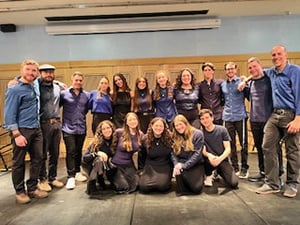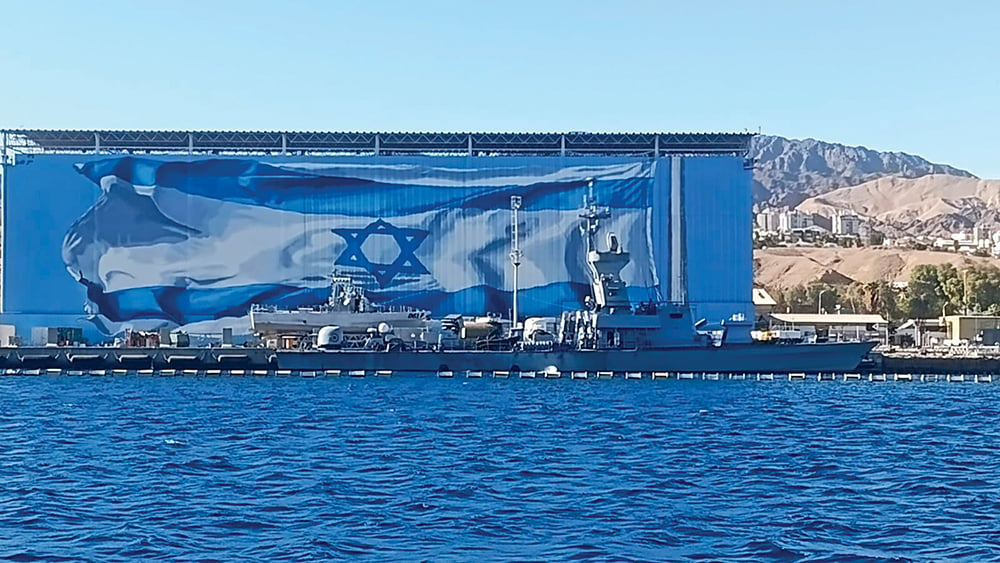The idea of ‘closure’ is a very popular one in the arena of mental health. A quick Google search of the term describes it as an individual’s need or desire for a clear answer in order to avoid ambiguity. Unanswered questions may stilt one’s ability to move on while closure brings relief and allows forward movement.
Life does not always end up in nice neat little packages, however, and there will always be unanswered questions. Can we still move on? In order to do so a different kind of closure is necessary, where unanswered questions do not paralyze.
The Az Yashir that we read on Shabbos Shira, and that we say daily in our morning prayers is a lesson in closure. Recall that in the initial stages of Moshe Rabeinu’s mission, he asks a penetrating – almost accusatory question of Hashem: Lamah harei’osa la’am hazeh? Why did you do evil to this nation? U’mei’az basi l’Paroh l’daber bishmecha heirah la’am hazeh – From the time I came to speak to Pharaoh in Your name, You did harm to this nation (and things only got worse). Moshe does not get a full answer to this question, yet he moves on with his mission with the understanding that it is impossible to know Hashem. He achieved closure of sorts – albeit without answers – that still allowed forward movement. Moshe was called to task for his observations and expectations of clear answers. He subsequently repaired this lapse of judgment through leading the Jewish nation in song following the splitting of the sea. The Midrash in Shmos Rabah teaches us that Shiras Hayam is introduced with the words “Az yashir” which is an echo of Moshe’s question to Hashem – “mei’az basi l’Paroh”. To paraphrase the Midrash, Moshe stated, “I sinned with ‘az’ by expecting answers, and now I praise You with ‘az’”.
When Am Yisrael left Egypt and witnessed the splitting of the sea, Hashem’s lesson became clear. Moshe had previously questioned God’s plan, but subsequently engaged in a sort of atonement by singing shira. The Torah alludes to this perspective by introducing the shira with the words Az Yashir – a future tense construct despite it having already occurred. To God, past, present and future are all one unit. On the other hand, we only see a small snapshot of events, and rarely do we merit to see the complete picture or acquire answers to all the “lamahs” in our lives. Am Yisrael, however, was able to achieve a certain level of clarity. The Midrash points out that they sang Az Yashir – and focused on the future – a future with techiyas hameisim that is accompanied by complete clarity. This song did not erase their tormented past, but bridged the past with their present exodus along with the future which would bring them into the Land of Israel with the building of the Temple. The future would also bring Messianic perfection. This allowed the nation to achieve the clarity that they indeed can move on despite their unresolved questions since there would be a time when those questions will not even exist.
Rav Gedaliah Schorr z”l asks why Bnei Yisrael sang shira only after Kriyas Yam Suf, rather than singing immediately after leaving Egypt. He further asks why this shira was so unique.
I recall as a little girl, growing up in Baltimore, we occasionally used the services of a Russian seamstress for minor mending and alterations. Her husband would answer the door and his tension was palpable; the shades were always drawn, the lights dimmed and both husband and wife would speak in hushed anxious tones while shuffling around in obvious anxiety. My mother a”h, who knew the backstory, would speak with this woman for quite some time to ease her tension. She would explain to me what a rachmanus it was on this elderly couple who were still fearful of their Russian oppressors, even though they were settled and safe here in America far from Communist Russia.
Rav Schorr explains that leaving Egypt indeed brought an end to their physical suffering, however, even after leaving they were still haunted psychologically by the threat of the Egyptians. It was only seeing the soldiers and horses washed up on shore, and their tormentors rendered lifeless, that they acquired complete relief. The result was a spontaneous expression of shira for the added gift of witnessing the eradication of the Egyptian army. They may still have had questions, but some sort of closure was achieved.
Rav Schorr continues that Shiras HaYam was unique since the people sang not only about their freedom and witnessing of miracles, but they were actually able to sing about their past suffering. Bnei Yisrael could have sung shira but still questioned why God chose to hurl them into slavery in the first place. However, explains Rav Schorr, citing the Sfas Emes, this song was an expression of the joy of leaving their questions behind. They now understood for those moments, that all of the years of suffering were somehow necessary for their development as a nation. The shira blurred the boundaries of time and the newly freed slaves experienced clarity where past, present and future melded into one coherent scene. The suffering itself became part of the shira. Bnei Yisrael retroactively transformed their cries of agony into a beautiful song of praise.
When individual notes of music are played, or when one person plays his instrument randomly, this may not amount to much, and may even be difficult to listen to. However, when 50 instruments play together with the notes and chord structures in a pattern and plan, the result is a beautiful symphony. This is shira.
Shira is the ultimate expression of clarity when we realize that although we are not privy to Hashem’s plan, His world – and by extension – our lives and the surrounding events, actually do have meaning and purpose. Our questions may not even be answered, but the song is an expression of security in God’s plan. When we arrive at the realization that Hashem is in control, the result is closure and a symphony of shira.
It is often difficult to see the shira within the challenging chapters of our lives, much like we cannot make sense of random discordant musical notes. We witness illness that does not heal, family dynamics that do not resolve or economic situations that remain challenging. We still do not understand the horrors of the Holocaust and we cannot begin to know God’s reasons for the October 7th massacre and kidnappings. The pain of not knowing the whereabouts or condition of a loved one or the agony of losing a child or young husband in battle is incomprehensible to those who have not experienced it. There are heroic victims who somehow summon the strength to give others chizuk. Even getting up in the morning and facing the new day requires superhuman strength. Such heroism is an inspiration to find our own voices of song and reach the high notes. God willing the victims of this harrowing war should find some comfort and relief from their unspeakable trauma. May we merit to sing the beautiful score accompanying our final redemption.
Aviva Orlian is a women’s Torah educator. She is also a practicing speech-language pathologist.












